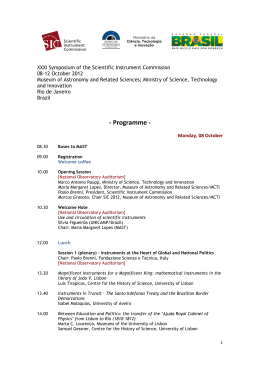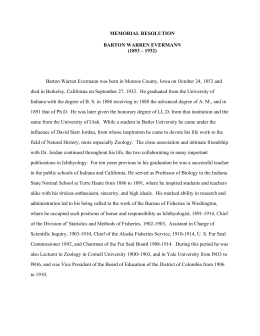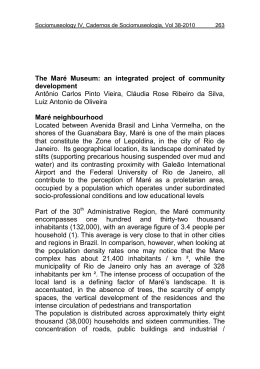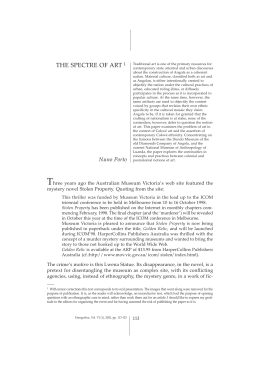UFRJ search group dedicated specifically The to Egyptian archaeology. It con- EGYPTIAN gregates scholars COLLECTION dents involved in research projects M u s e u on funerary religion, landscape, art, new technologies and the Egyp- d o tian collection of the National Muse- E g i p t o l o g i a um of Rio de Janeiro, among other themes. These projects are related to research and other activities of the Division of Archaeology of the Museum’s Department of Anthropology. The Seshat Research Group in Egyptology includes scholars and students O M u s e u N a c i o n a l from various universities in Brazil and also Portugal, Spain and France. http://www.seshat.com.br/ [email protected] N a c i o n a l MUSEU NACIONAL first Brazilian re- Quinta da Boa Vista—Bairro Imperial de São Cristóvão Rio de Janeiro—RJ—Brasil http://www.museunacional.ufrj.br/ Phone: (21) 3938-6900 Informations: [email protected] Office hours: Tuesday to Sunday (including holidays) from 10 to 17 hours. Mondays from 12 to 17 hours. d e E g i p t o l o g i a d e Egyptology is the S E M N A — S e m a n a N a c i o n a l / U F R J M u s e u and graduate stu- d o search Group in L a b o r a t ó r i o S E S H A T The Seshat Re- The Egyptian collection of the National Museum of Rio de Janeiro The Egyptian collection held at the National Museum is the biggest and most likely the oldest in Latin America. The majority of the objects are dated from 1826, when an Italian merchant named Nicolau Fiengo arrived in Rio de Janeiro. He brought a collection of antiquities from Marseille (France) that had been excavated probably by Giovanni Battista Belzoni in the Theban Necropolis and in the Karnak Temple. Belzoni worked with antiquities between 1816 and 1819. D. Pedro I bought the objects in an auction and donated Fiengo’s collection to the Royal Museum, founded in 1818 by D. João VI. D. When D. Pedro II travelled to Egypt for the second time in 1876 he brought other objects that have been also incorporated in museum’s collection. On that occasion, he brought a present from Qediva Ismail: a painted sealed coffin keeping the mummy of ShaAmun-em-su, a singer priestess of Amun. The Emperor used to keep the coffin in his office until the Republic Proclamation in 1889, when it was then transferred to the current National Museum. Since then, the Egyptian collection of National Museum has been enlarged by private donations, comprising now around 700 objects. The SEMNA The SEMNA Conference of Egyptology is organised by the Seshat Research Group in Egyptology of the National Museum of Rio de Janeiro. Semna was the fortress erected by Senusret I in Nubia. As a fortification, our aim is to consolidate the bases from which Egyptology in Brazil could expand. The provenance of the objects There is no precise register on the object’s provenance. However, most of the collection is likely from Thebes, which is reinforced by the inscriptions in some objects, as the coffins of Hori, Harsiese and Pestjef. They were Theban officials and their coffins may have been excavated somewhere in the Theban Necropolis. Thebes was the religious centre of ancient Egypt from the II millennium BC onwards. It comprised both Eastern and Western banks of the Nile. On the Eastern side there are the ruins of Luxor and Karnak Temples and on the Western side the remains of the Pharaohs’ Funerary Temples, the Valleys of the Kings and Queens and many private tombs. Nevertheless, not all the objects came from Luxor. The Egyptian collection of the National Museum includes many examples of stelae from Abydos, the sacred city of Osiris. These objects were placed near where it was believed that the god was buried. The main proposal of the SEMNA is to congregate scholars from vairous areas in an optimal collaborative environment where different research topics can be discussed. We also seek to spread the knowledge of ancient Egypt produced by scholars to the general public. In this way, we aim to promote Egyptology in Brazil beyond the university’s confines. The National Museum of Rio de Janeiro The Royal Museum was created by a decree of D. João VI in June 06, 1818. The museum was held in Campo de Sant’Anna until 1892, passing then to the former Imperial Palace at Quinta da Boa Vista. Since 1946 the National Museum became part of the University of Brazil, now Federal University of Rio de Janeiro (UFRJ). During its history the National Museum of Rio de Janeiro has been contributing with teaching, research and extramural activities. It is now considered a leading institution in Natural and Anthropological sciences in Brazil.
Download





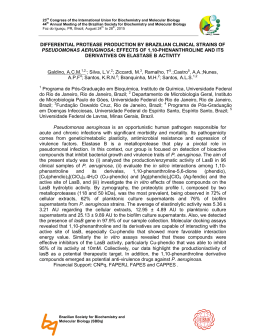
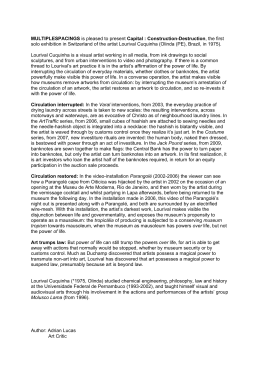
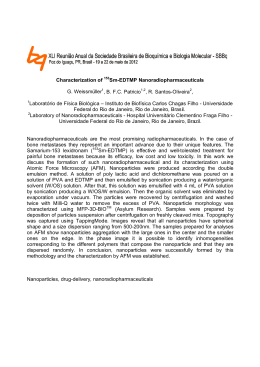
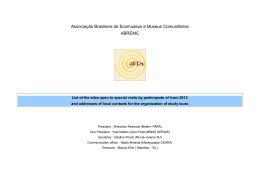

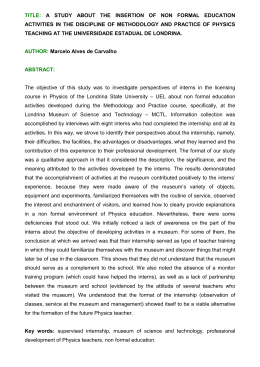
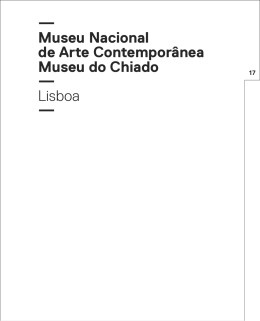
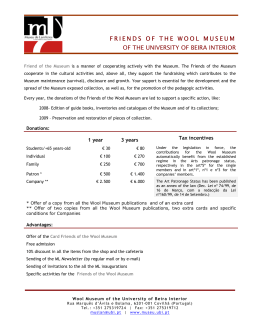
![Rio de Janeiro: in a [Brazil] nutshell](http://s1.livrozilla.com/store/data/000267057_1-8f3d383ec71e8e33a02494044d20674d-260x520.png)
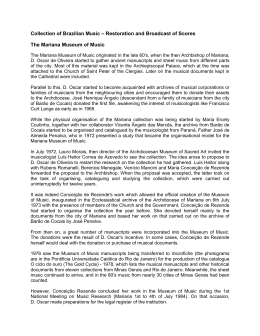
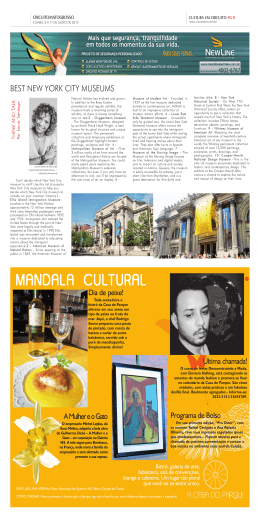

![ISIDRO BLASCO PR [ENG] - Galeria Carlos Carvalho](http://s1.livrozilla.com/store/data/001627363_1-520b042f1025a9269d48b68bd27e7441-260x520.png)
